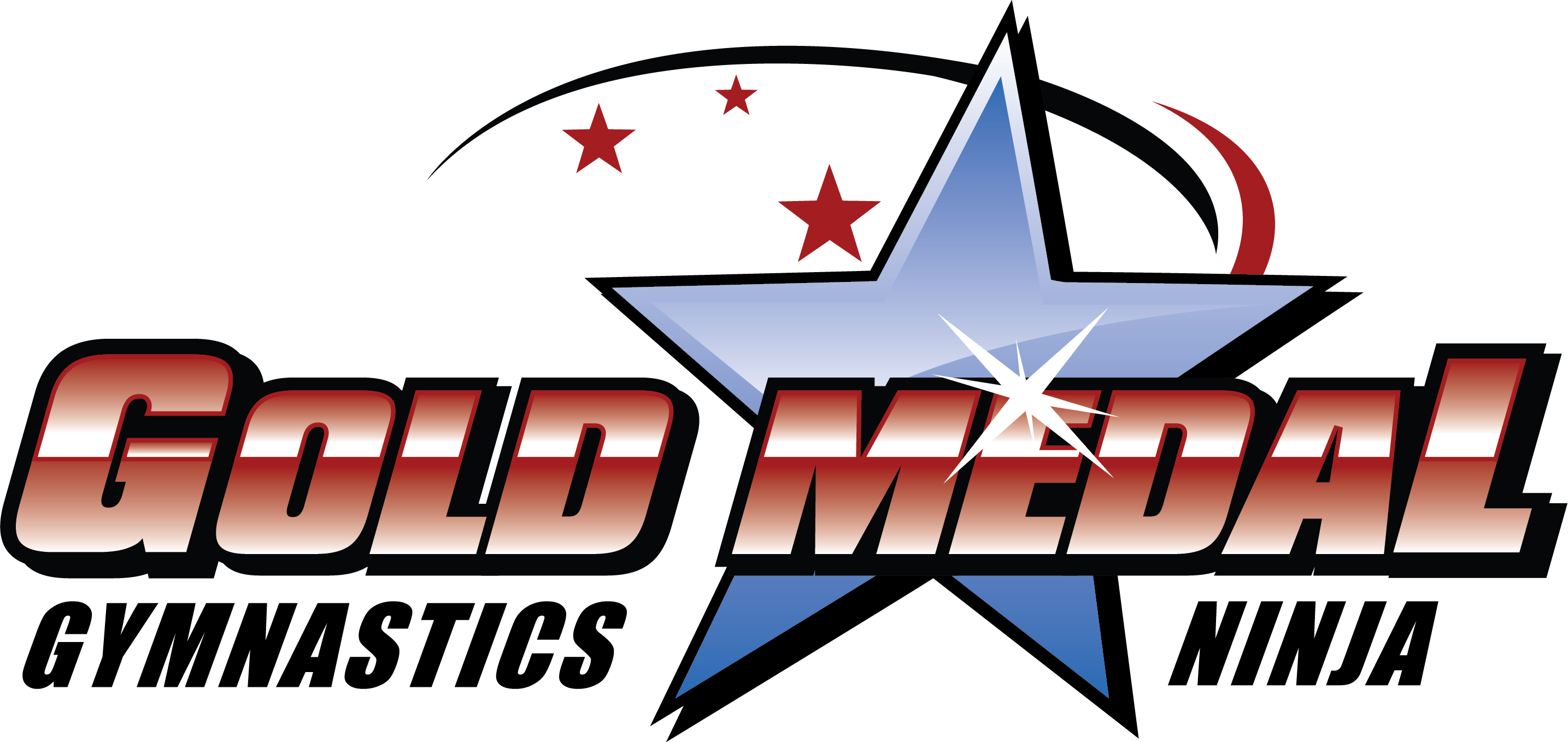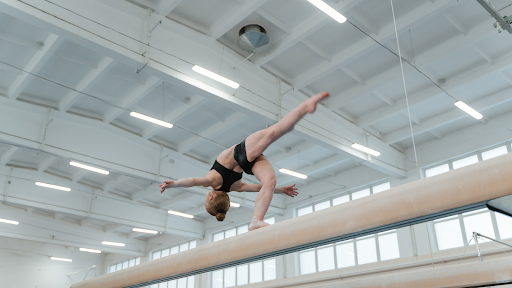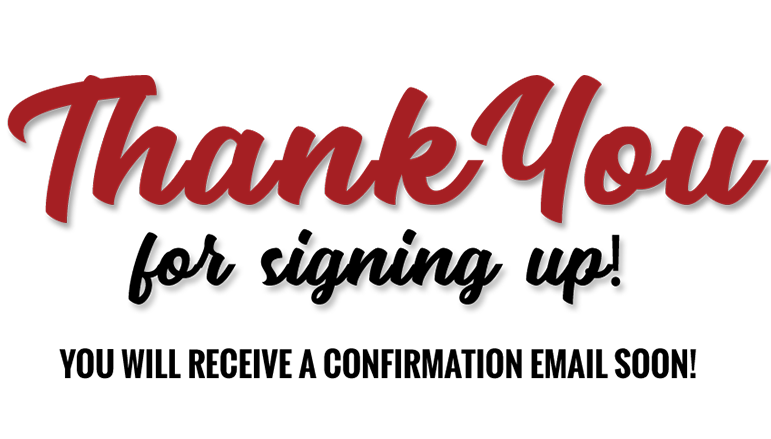The balance beam, a quintessential component of artistic gymnastics, is a true test of precision, agility, and fearlessness. The skills required to master this apparatus are as diverse as they are challenging. This guide seeks to unravel the complexity of the balance beam, breaking down the steps and techniques necessary to conquer this formidable discipline.
Whether you’re a beginner stepping onto the beam for the first time or a seasoned gymnast looking to enhance your repertoire, this guide by GMGC will provide valuable insights to help you rise to the challenge of the balance beam. Our focus on the balance beam is not merely on the physicality it requires but also on the mental strength it cultivates, as we believe that the beam is not just about balance but also about confidence, precision, and courage.
What Is the Gymnastics Balance Beam?
The gymnastics balance beam is a long, narrow apparatus that stands four feet high from floor to top, measures four inches wide, and then progresses to approximately sixteen feet in length. For beginners, the beam may seem daunting at first. But with practice and proper technique, kids can quickly progress from basic skills to more advanced moves.
The beam can help develop physical skills like strength, flexibility, and agility, as well as mental skills like focus, discipline, and perseverance. Beginners can initiate with simple exercises like walking or squatting on the beam, gradually building up to more challenging moves like turns and jumps. The balance beam is a true testament to the sheer athleticism of these incredible athletes.
Benefits Of Learning Gymnastics Balance Beam Skills
The ability to maintain balance, focus, and control are all key elements of being a successful gymnast. As such, this makes learning gymnastics balance beam skills essential for young and aspiring gymnast. There are several benefits of learning gymnastics balance beam skills, such as:
Improved Balance And Coordination
Mastering gymnastics balance beams helps kids develop better coordination and balance. The goal of a gymnastics beam is to teach children how to master their bodies and Minds while executing complicated and challenging skills on the beam. Learning how to balance on a gymnastics beam is a great way to boost proprioception, or the body’s capacity to perceive and manage its own movement and position. The improved balance and coordination of mastering gymnastics balance beams also carries over into other physical activities like dancing, martial arts, and sports, making your child more likely to succeed in other sports.
Boost In Self-Confidence
Children can benefit from gymnastics since it helps them gain confidence in themselves. Young people who train on the gymnastics balancing beam often develop a sense of agency and competence that they didn’t have before. This improved sense of self-worth might manifest itself in a more favorable perception of oneself.
Development Of Spatial Awareness
The balance beam also promotes the development of spatial awareness in children. Spatial awareness is the ability to understand the positions of objects and people around oneself. Balancing on the gymnastics beam requires children to recognize their body’s position in space and make adjustments accordingly. Spatial awareness is critical to the development of important life skills such as driving, navigating, and participating in team sports.
Enhancement Of Concentration And Focus
Improving one’s ability to concentrate and focus is a further advantage. Standing or walking on the balance beam requires kids to tune out the world and concentrate solely on the activity at hand. Learning to focus and concentrate is a talent that may be applied in many different contexts, including the classroom, where it can help students do better.
Encouragement Of Risk-Taking
Mastering the gymnastics balance beam requires going out of one’s comfort zone and stretching new things. Young people develop the capacity to accept risks and make choices that take into account their individual circumstances. Encouragement of risk-taking in children can promote a growth mindset, in which the focus is on improvement and learning rather than avoiding mistakes.
Some Common Gymnastics Balance Beam Skills To Consider
Aside from the beneficial aspects of learning gymnastics balance beam skills, mastering certain moves is necessary to progress in the sport. Here are some fundamental skills and techniques that a beginner should consider:
Beam Walk
This is one of the first skills children should learn when starting out on the balance beam. It involves walking forward, backward, and sideways along the length of the beam while maintaining balance. Initially, this may be done with the arms stretched out to the sides for better stability. As they gain confidence and enhance their balance, they can advance to more challenging variations, such as walking on tiptoes or with their eyes closed.
Jumps
Jumps on the balance beam are a basic skill that helps beginners get comfortable leaving the beam and landing back on it. Simple jumps like straight jumps or tuck jumps are usually introduced first. In a straight jump, the gymnast springs off the beam with both feet and keeps the body straight in the air before landing. In a tuck jump, the knees are brought up towards the chest in the air before landing.
Turns And Pirouettes
These skills involve rotating the body while maintaining balance on the beam. A simple turn might involve standing on one foot and turning 180 degrees. As the gymnast becomes more comfortable, they can progress to full 360-degree pirouettes. Turns and pirouettes require good body control, balance, and spatial awareness.
Acrobatic Skills
Once a child has mastered basic balance and jumping skills, they can start learning simple acrobatic skills on the beam. This might include rolls, handstands, or cartwheels. These moves require strength, flexibility, and precision. They also contribute to a gymnast’s overall beam routine and are a stepping stone to more advanced acrobatic skills.
Dismounts
Dismounts are how a gymnast finishes their beam routine. For beginners, this might be as simple as a straight jump off the end of the beam. As they gain more skill and confidence, they can progress to more complex dismounts like cartwheels or somersaults off the beam. Dismounts require good timing, body control, and an understanding of safe landing techniques to prevent injury.
Crafting a Daily Routine to Improve Balance Beam Skills
Learning gymnastics balance beam skills is a long-term process that requires patience and commitment. To progress in this sport, children must practice regularly. Here are some suggestions for building an effective daily routine:
Warm-Up
Before starting a balance beam exercise, kids should warm up their muscles with light stretching. This helps prevent injuries and increase range of motion. Dynamic stretches that involve movement are great as they help improve flexibility and coordination. Kids should also do some light cardio to get their heart rate up and increase blood flow.
Basic Skills Practice
Beginners should begin by practicing basic skills such as beam walks and jumps. They should start slowly and focus on building balance, body control, and accuracy. Games like hopscotch are great for helping kids get comfortable with the motion of walking on the beam. Repetition is key to improving these skills, so they should be practiced regularly.
Progressive Challenges
As children become more confident and proficient in their basic skills, they can progress to more challenging moves. This might include advanced jumps or turns, acrobatic moves, or complex dismounts. Each task should be broken down into smaller steps and practiced incrementally until the child is comfortable with it. Some of the tasks include front and back handsprings, round-offs, splits, and leaps.
Strength And Conditioning
Developing strength and conditioning is critical to success in gymnastics. Kids should include exercises that target the muscles they use for balance beam skills, such as their abdominals, legs, back, shoulders, and arms. Core stability exercises are especially important, as this helps them maintain control while performing more complex moves on the beam.
Routine Development
As children progress in their skills, they can start to put together a routine for competition. They should have at least two minutes of beam work and practice it regularly until they feel comfortable with the movements and transitions. A routine should also demonstrate variety and creativity while highlighting their best skills, like in preschool programs.
Artistic Expression
Gymnastics balance beam is a form of artistic expression. Kids should be encouraged to express themselves by showcasing their unique style and personal flair while still meeting all the technical requirements of the sport. With practice, they can add unique elements like arm movements or poses to elevate their performance.
Cooldown And Flexibility
After each practice session, gymnasts should do a cool down to lessen the risk of injury. This should include light stretching and exercises that help them relax their muscles. Kids can also use foam rollers or other tools to work on increasing flexibility in areas like their hips and shoulders. Kids are getting ready for recreational and competitive gymnastics. A good balance beam routine can help them build the necessary skills to excel in the sport.
Safety Precautions And Injury Prevention
Gymnastics is an inherently risky sport and can lead to injuries if safety measures are not adhered to. Therefore, it is important for children to be aware of the potential risks when practicing on the balance beam. Here are some tips for staying safe:
Proper Equipment And Padding
It is important for children to use the proper equipment and padding while on the balance beam. This includes good-quality mats, crash mats, and spotting blocks. They should make sure that all equipment is in good condition before using it. Kids should also wear appropriate clothing, like leotards with grip soles, to help them keep their footing.
Using Right Beam And Safety Mats
Kids should use the right size beam for their skill level. If they are just starting out, they should use a beam that is at least four inches wide and 10 feet long. They should also place safety mats under and around the beam to minimize injury in the event of a fall.
Warming Up And Cooling Down For Beam Training
Kids should always warm up and cool down before and after beam training. This includes stretching, light cardio exercises, and foam rolling. Warming up helps increase range of motion, flexibility, and coordination, while cooling down helps reduce the risk of injury by helping muscles relax.
Recognizing And Addressing Overuse Injuries
Overuse injuries can occur if too much stress is placed on certain muscles. Kids should pay attention to their bodies and recognize signs of fatigue or pain. If they feel any discomfort, they should stop exercising and take a break. Stretching, foam rolling, and rest are all important approaches for recovering from overuse injuries.
Embark on a Balance Beam Skill Journey with GMGC!
Gymnastics balance beam skills are an important part of the sport. GMGC can provide your child with the necessary guidance and support to help them reach their goals. Our coaches will ensure that your child is following proper technique and safety measures while learning a variety of gymnastics moves on the beam. We also teach kids about good nutrition, body awareness, performance psychology, and more to help them conquer the balance beam with confidence. So join us at GMGC and take your child’s gymnastics journey to the next level!


